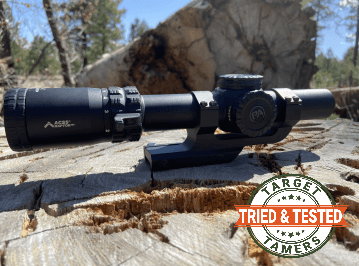With the ACSS Raptor M6 reticle, AutoLive, turret options and more, it’s obvious Primary Arms wanted to give the GLx scope everything they could.
However, some manufacturers make the mistake of spreading thin the quality, so to speak, and the scope ends up a paper weight sooner rather than later.
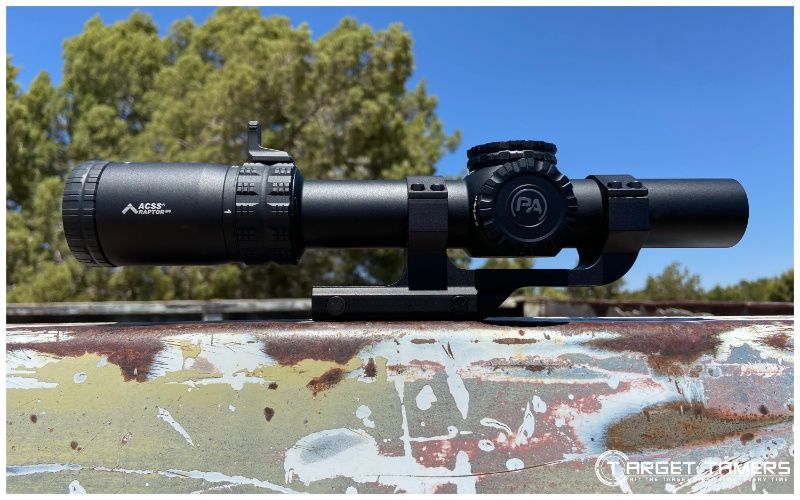
The criteria: to investigate if PA seamlessly integrated these top-tier features without compromising on quality and rapid ease of use to fit the mid-tier price range.
My Primary Arms GLx 1-6x24mm FFP review covers illumination, battery life, reticle ease of use, waterproofness, and more. Here is my thought process and hands-on conclusions.
My Primary Arms GLx 1-6x24 FFP Review
Quick Overview...
What I Like: ACSS Raptor M6 5.56 FFP reticle
What I Don’t Like: Limited included accessories
Best Uses: Hunting, Competition, Target Shooting, Law Enforcement, Tactical, Small to Heavy Caliber, Shot Guns, FFP Reticles, Illumination
- Magnification: 1-6x
- Objective Diameter: 24mm
- Coatings: FMC
- FOV: 104.7-18.3 ft @100 yards
- Eye Relief: 3.5-3.3”
- Adjustments: 0.1 MIL
- Dimensions: 10.25” (L) / 21.3 oz
Our Verdict: Overall, Primary Arms offers an affordable, quality, and fast to use riflescope in the GLx 1-6x FFP. Packed with top-tier features and priced in the mid-range class, it offers distinguishable value and outpaces alternative LPV scopes at the same price point.
Why Trust Me?
After hundreds of hours of hand-testing riflescopes in the field and on the hunt, and thousands more hours researching, writing, photographing and creating videos about them, I feel I have earned the title of expert when it comes to optics!
Optics are not just my passion, but also my full-time job!
I get my hands on as many of the optics I test as possible (through buying, borrowing or begging!) and run them through their paces to make sure they will perform out in field.
Check out our optics testing process here.
Over a decade of experience hunting, competition and target shooting has been integral in putting together this Primary Arms GLx 1-6x24 review.
Who is the Primary Arms GLx 1-6x24 FFP Best Suited to?
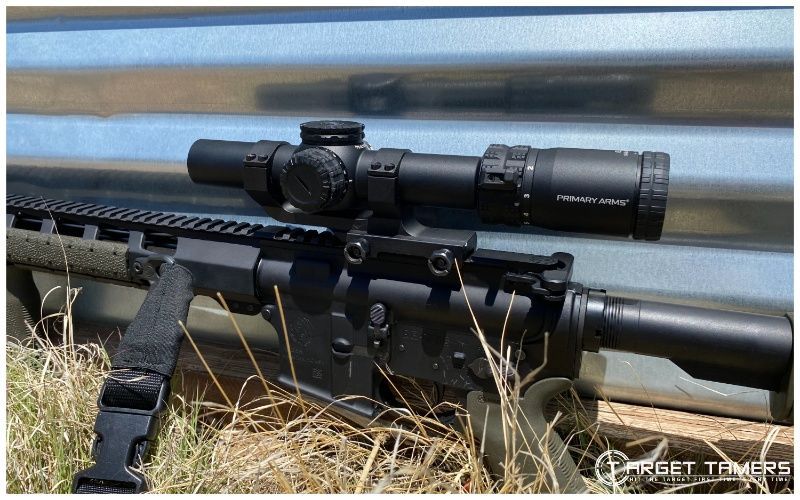
In general, the GLx 1-6x FFP scope is best suited to any shooter looking for an LPVO under $1000 with a 1-6x configuration and MIL reticle (with MIL turrets to match). The ACSS Raptor M6 FFP reticle, long eye relief, configurable turrets, and excellent build quality offers exceptional value to all. In fact, I recommend it as one of the best 1-6x scopes on the market and one of the best scopes for putting on a Ruger AR-556.
Complete with AutoLive, a configurable throw lever, and good battery life (for a riflescope), they add measurable value compared to alternative LPVO scopes in the same price range.
One of my favorite features is the ACSS reticle in the FFP. It offers everything from auto ranging to wind holds, bullet drop, and more without the clutter. Being able to do all this without ever taking your eyes off the target in high-stress engagements offers a lot of value to shooters in various applications.
I recommend the PA GLx FFP scope for target shooting, some hunting, home defense, SHTF rifles, and even those in law enforcement that are looking for affordability when the department isn’t flipping the bill.
How Does the Primary Arms GLx 1-6x24 FFP Perform?
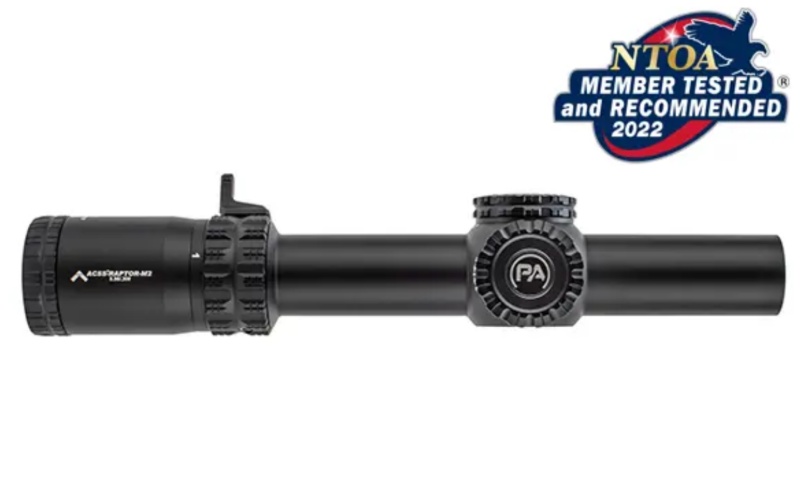
The Primary Arms GLx 1-6x24 First Focal Plane riflescope is an LPVO (Low Power Variable Optic). Primary Arms states that it’s a gold-tier scope as rated by the National Tactical Officers Association (NTOA). Made for the mid-tier category, the GLx 1-6x LPVO fits the class in features and performance in my opinion.
Compared to the field-tested Strike Eagle 1-8x FFP LPVO, it offers far better value thanks to the extra features.

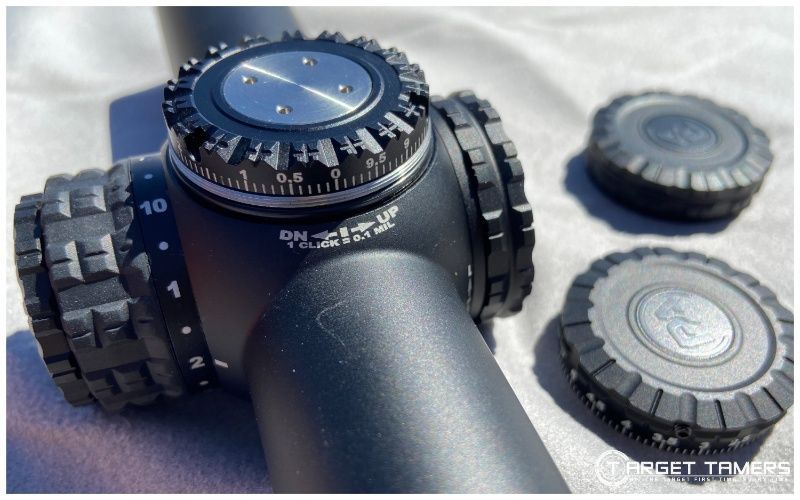
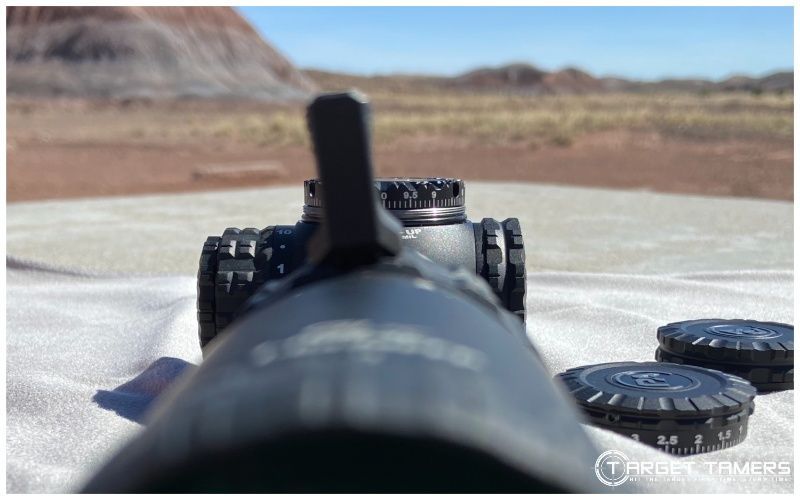
Range days were straightforward. There are no revolution markers on the turret system as the turret does not travel upwards as you adjust up. However, this is what allows the turret system to maintain a low profile. The turrets have 200 MOA in adjustment travel – each! I’m pretty sure that 200 MOA equates to approximately 57 MIL!
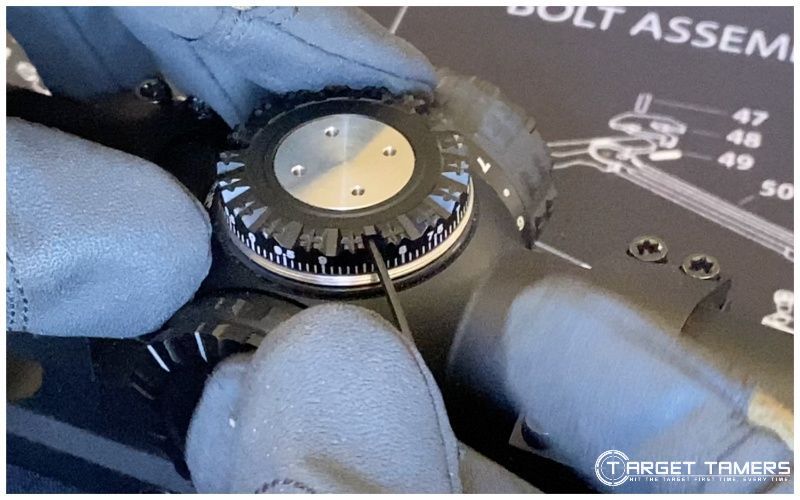
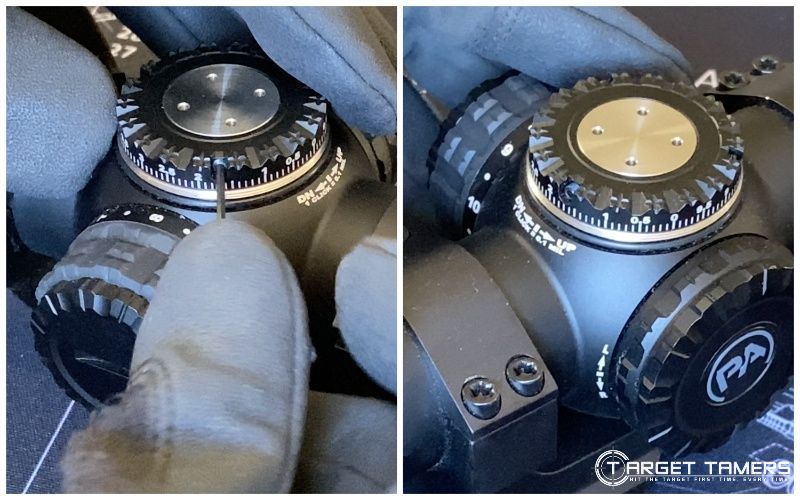
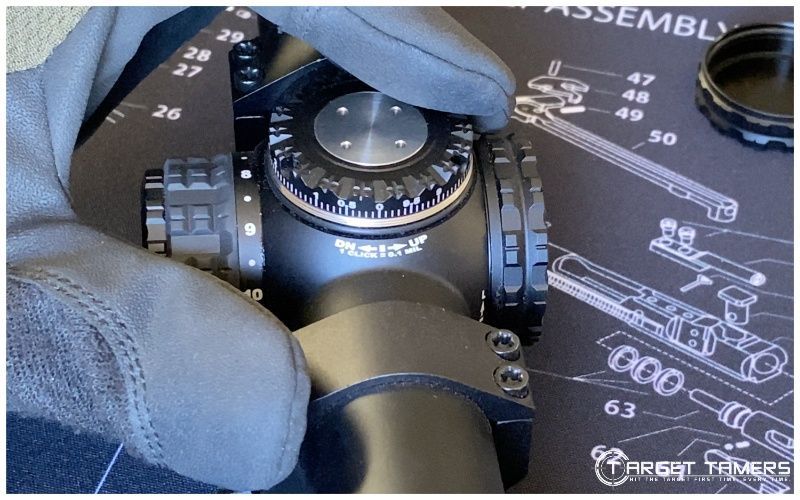
Resetting the turret to zero (0) is easy to do. The included 1.3mm hex key loosens up the set screws to rotate the turret to 0. It’s essential to not completely remove the set screws – even when you’re switching out to the tactical turret.
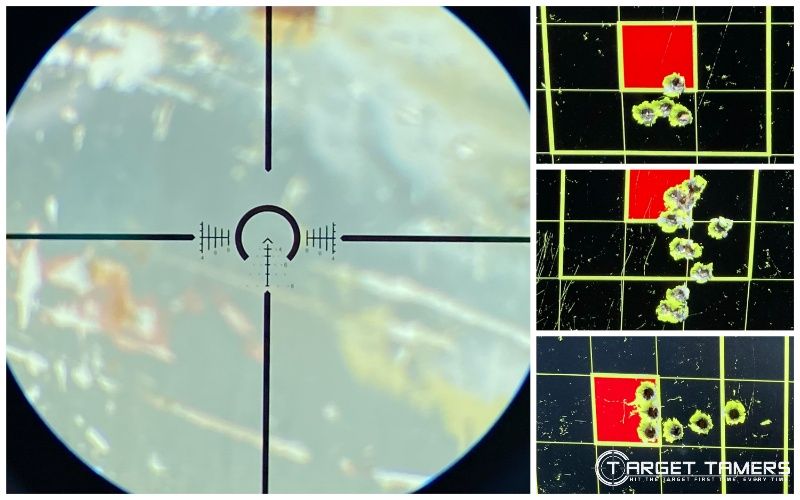
I was in the white right out of the box. As expected, tracking was excellent, and there were no deviations outside of user error when sighting in for 100 yards. Hitting steel out to 200 and 300 yards were spot on with the ACSS Raptor M6 reticle. My Strelok Pro app doesn’t yet have the ACSS Raptor M6 reticle, but when it does, I’ll be able to crosscheck reticle calibration for my other rifles.
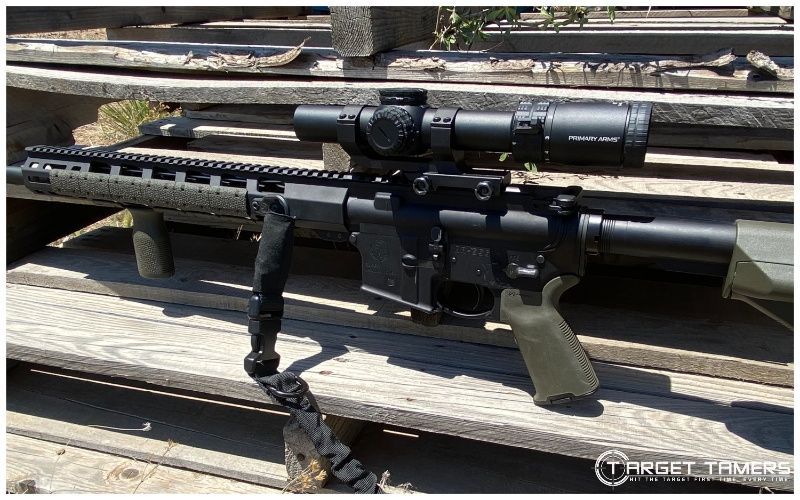
If you care about how it looks (subjective), I think the PA LPVO has a very rugged and sexy appeal. I think it’s the heavy and unique knurling around the moving parts that really sets it apart from your average LPV scope. The 30mm PLx cantilever mount (purchased separately) is a resilient, beastly piece of hardware, and those recoil lugs are going to keep it tight and retain zero.
All in all, the PA GLx FFP scope is worth the money in my opinion. It has a lot to offer that the best LPV scopes in the under $1000 price range just don’t have.
Features & Benefits
ACSS Raptor M6 5.56 FFP Reticle
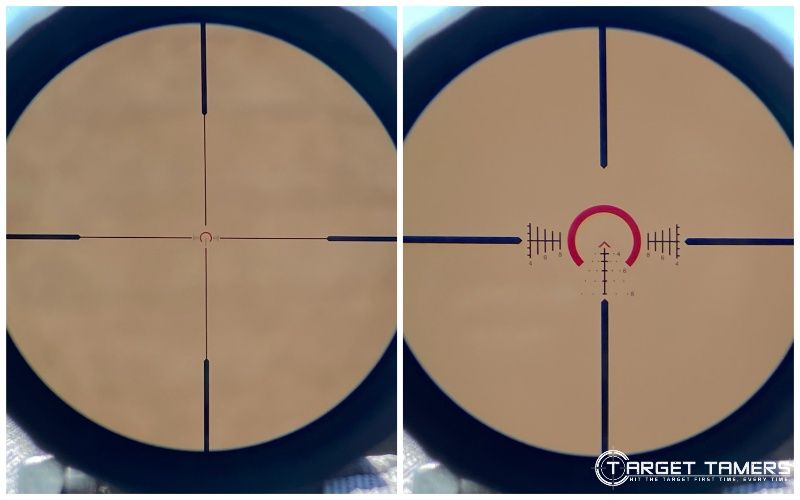
The ACSS Raptor M6 FFP reticle is one of the best LPVO reticles I’ve used to date. The crosshairs and horseshoe make for fast reticle acquisition with and without illumination. Versatility is offered from close-quarter use to MIL ranging, holding for 5 and 10 mph winds, and compensating for drop.
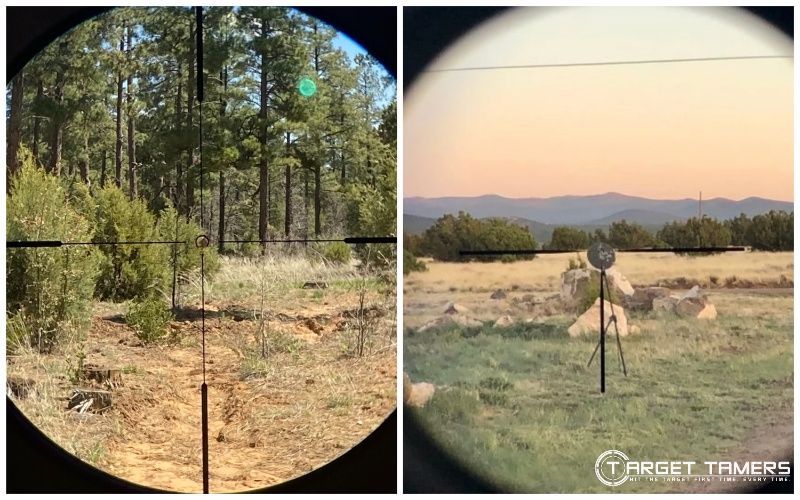
The reticle is small at 1x, but it’s bigger than the EBR-8 MOA reticle at 1x in the Vortex Strike Eagle. As a reticle in the FFP, it gets larger as magnification is increased while subtension remains the same. This is excellent for those of us who are not dialing in or want to stay in their pet power range to hold over.
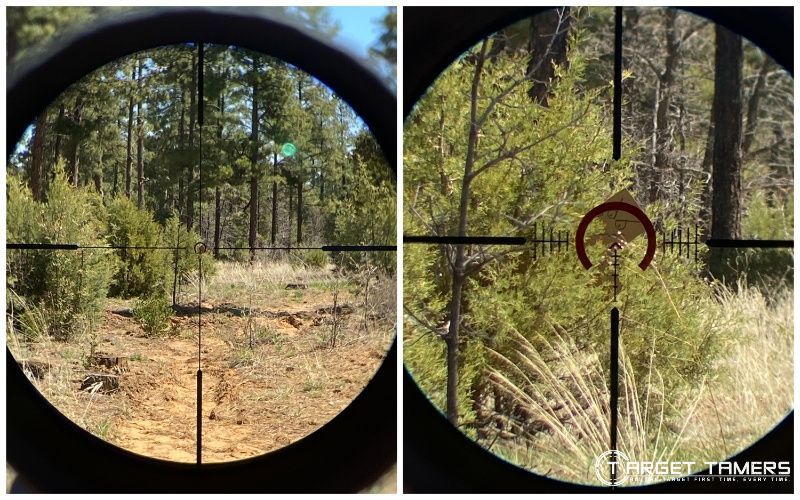
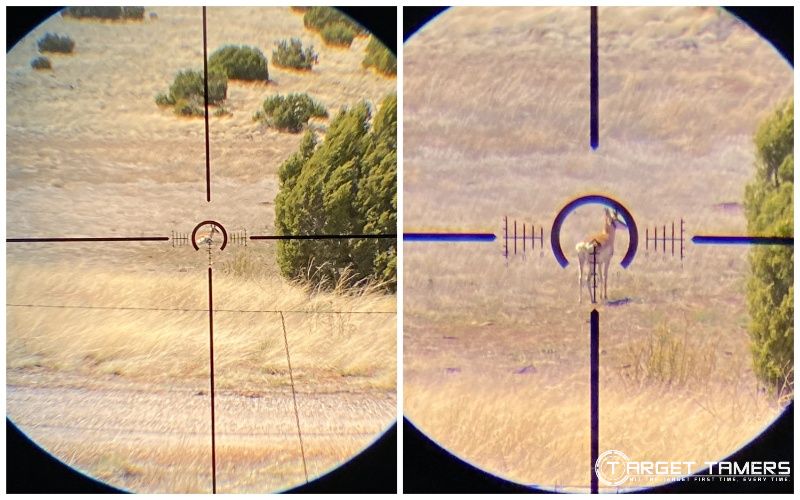
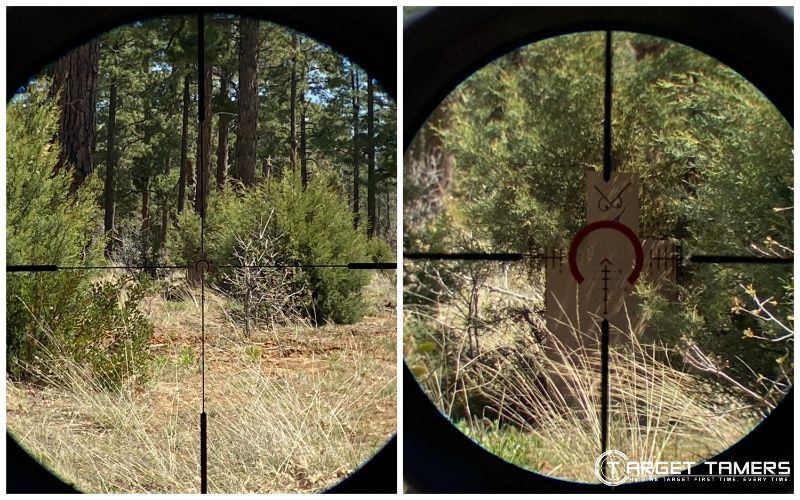
The chevron is outstandingly crisp and sharp which is perfect for preciseness. In low light and dim environments, the chevron stands out sharp and true-to-form.
The width of the base of the ‘triangle’ of the chevron can be used for auto ranging to measure an 18” center mass target at 300 yards. I tested this, and it’s exactingly perfect from shoulder to shoulder. This rule holds true for the following stadia lines out to 800 yards.
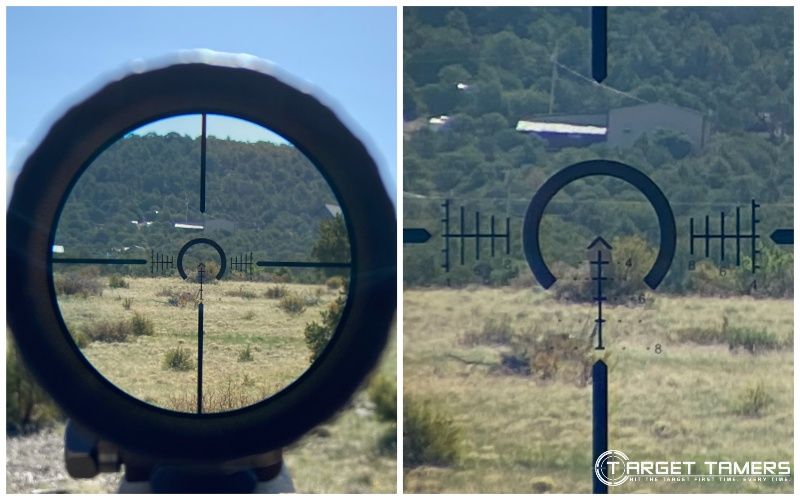
You can also vertically measure for a 5’ 10” target to gauge distance, mil range horizontally, and hold for 5 mph and 10 mph winds with the dots to 800 yards. There’s a lot of value to the ACSS Raptor M6 reticle, and PA does it with minimal clutter and excellent reticle visibility.
AutoLive & Partial Illumination
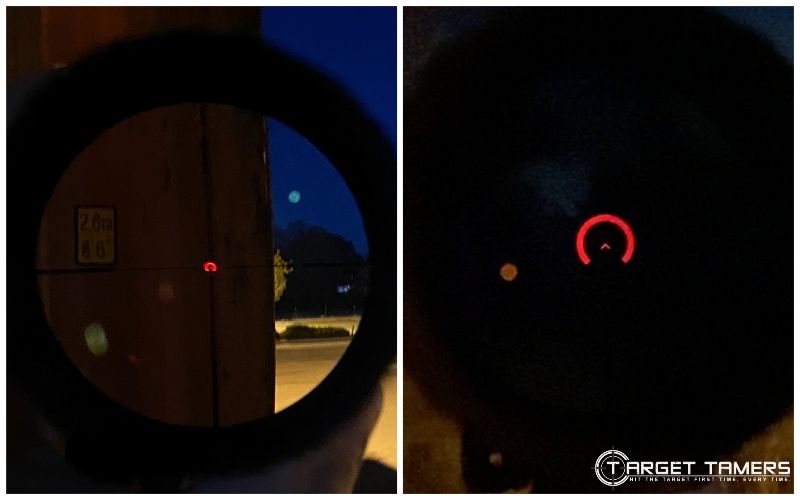
The extra features of the Primary Arms GLx FFP LPVO doesn’t start and end with the ACSS Raptor M6 reticle in the FFP. The manufacturer also outfitted the scope with the AutoLive feature to maximize battery life.
AutoLive initiates the illumination into stand-by mode after 3 minutes of non-movement. When the sensor senses movement, it reactivates the illumination to the current (and consequently last) setting that you were on.
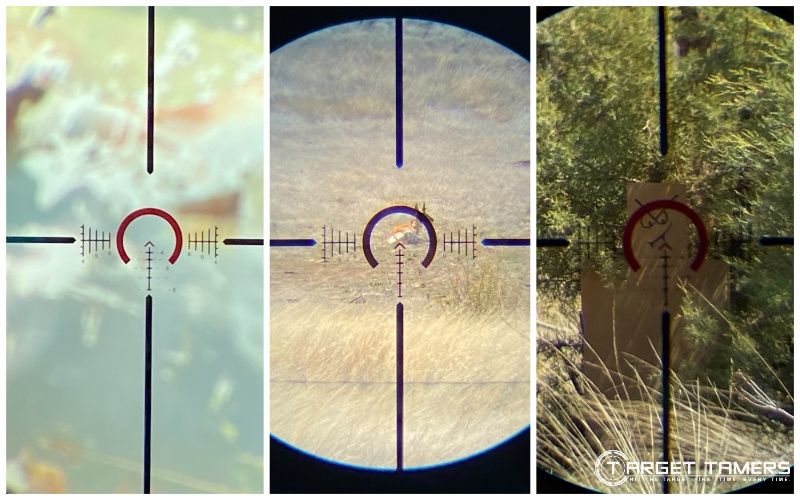
There are 10 total illumination settings. In most conditions, setting 1 is visible. I would not say that the illumination is daylight bright. It’s difficult to see even in normal daylight conditions. I’ve found it most useful for when I’m losing light, when indoors, or against dark targets. This is the way it’s supposed to be implemented.
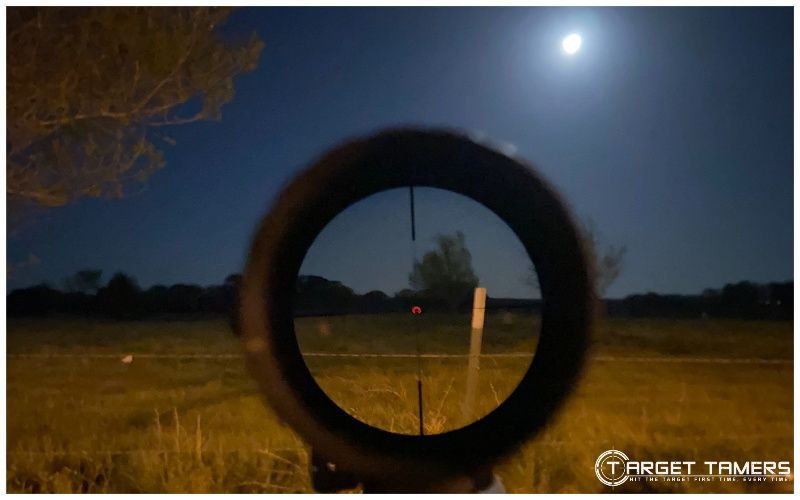
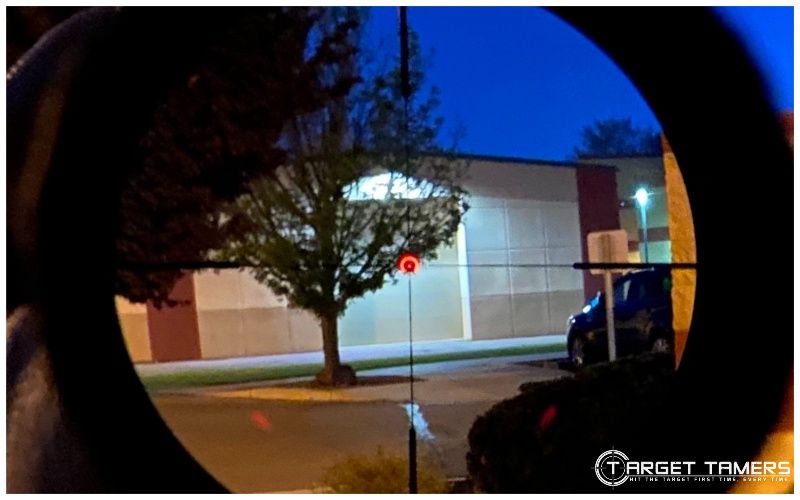
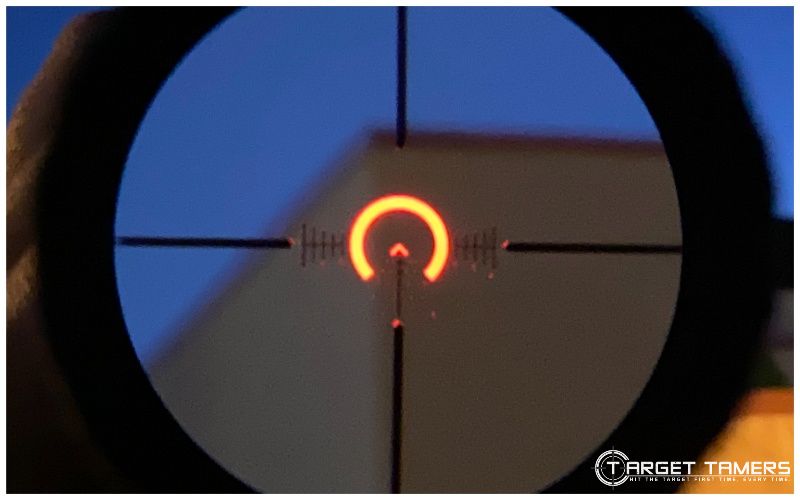
The ACSS M6 reticle is glass-etched, so with too much illumination indoors or in dark conditions, there is some visible bleeding.
Even without the illumination, the black reticle is extremely visible. I rarely find a need to use the illumination. Only the horseshoe and the chevron are illuminated, so it’s partial illumination. It takes a lot to illuminate a glass-etched reticle in an LPVO, so the AutoLive feature is a fantastic addition to stretch that battery life.
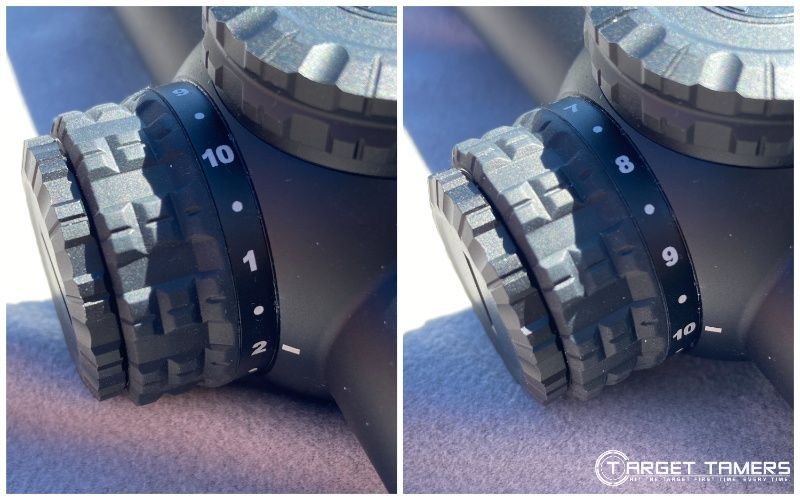
Though it has AutoLive, I really like the intermittent off positions between each setting. It takes no effort at all to dial the knob one notch in either direction to manually shut down the illumination. Speaking of the knob, I am a huge fan. The fact that it rotates both ways past max power makes it an extremely practical illumination knob.
Build Quality
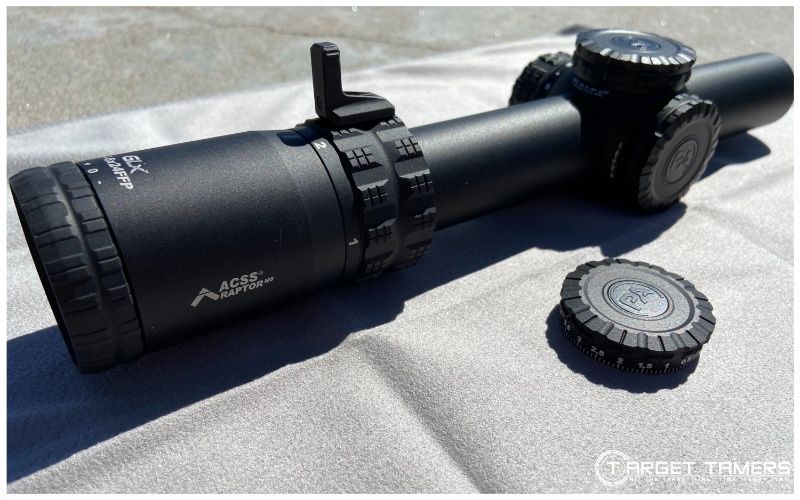
The build quality of the PA GLx 1-6x24 FFP scope is of excellent grade. It’s a one-piece aluminum body with a scratch-free finish that has held up amazingly. It weighs 21.3 oz (no mount) and is 10.25” long. Quality is obvious with its premium grade components, and it’s felt in the hand.
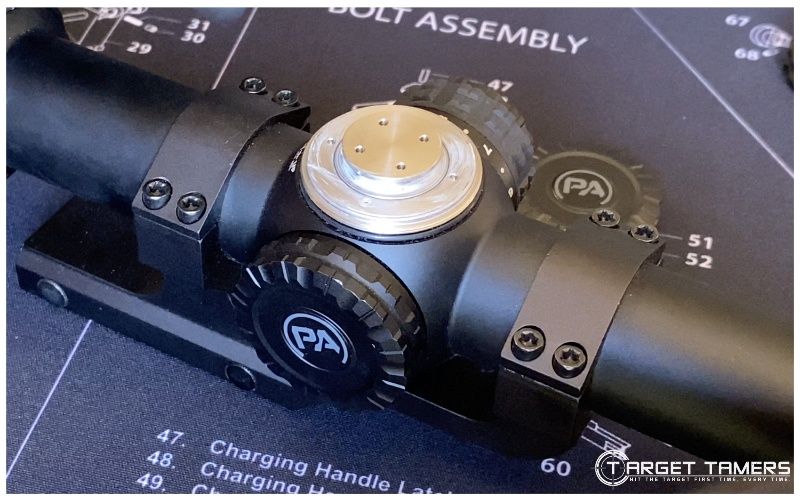
Steel-on-steel components make up the adjustment system that results in precise and tactile clicks. It has a 30mm tube, as is standard for an LPVO, but it certainly has a huge adjustment range that I’ve yet to see on an alternative scope.
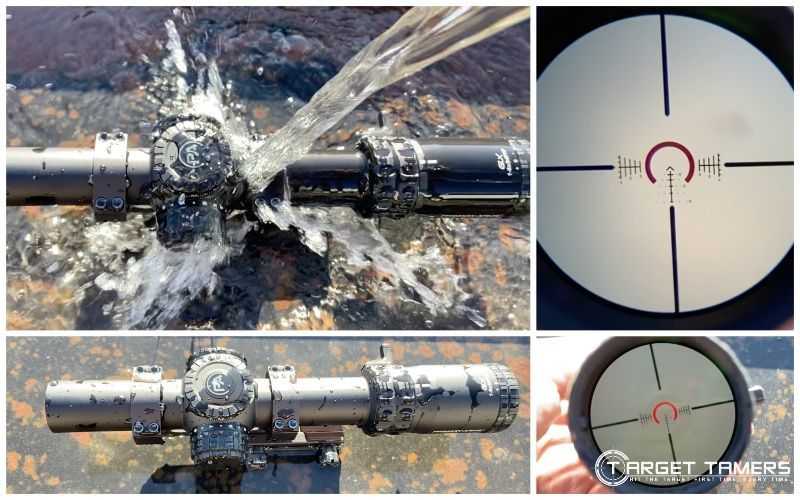
I drenched it with 2500 ml of water with the tactical turret on the scope. As expected, O-ring seals held up, the battery compartment cap stayed on tight, and the lenses did a decent job of shedding water. I didn’t want to let drops dry on the glass, and since there’s an ultra-nice and big microfiber cloth included, I dried it down and all is as it once was.
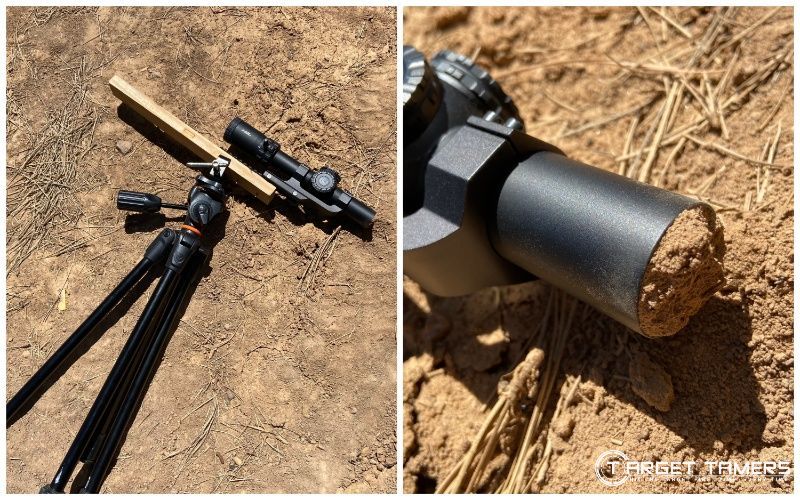
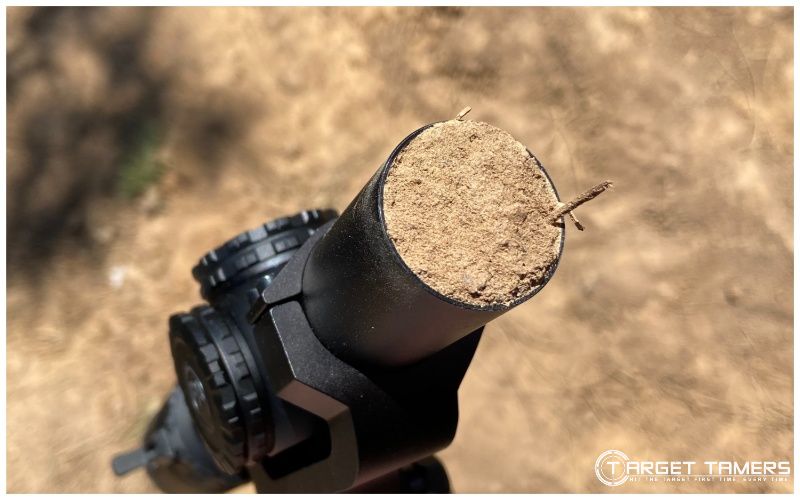
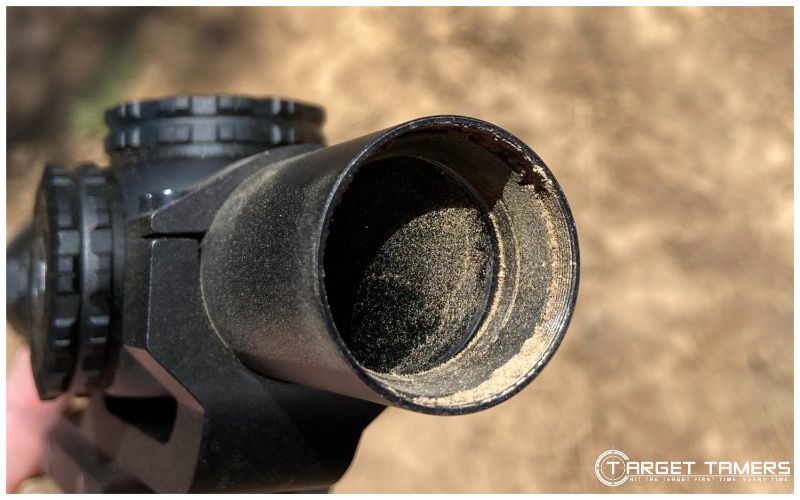
The Primary Arms scope also took an accidental dump right into the dirt. I also unintentionally dropped it right onto a wood pallet from 5 feet, and it’s been exposed to significant amounts of dirt and dust from shooting in mountain desert conditions.
After all of this, it’s cleaned up easily and still doesn’t have any wear and tear to show for all that I’ve put it through.
Optical Quality

The big issue most people have with LPV scopes is the fish-bowl effect (spherical aberration) at 1x. This is almost always present to some degree in an LPVO scope, and I’d say it’s inevitably present if you’re not looking down the optical center unmounted from a rail.
During actual shooting use and when moving the scope around quickly at 1x, I don’t notice it at all with two eyes open.
As for 1x performance, I’m actually very impressed with it. To my eyes, it’s true 1x and is easy to use with two eyes open. Color fidelity is pretty good too. I did notice in some light conditions it seems a little warm, but it’s nothing distracting enough to be disappointed with at all.
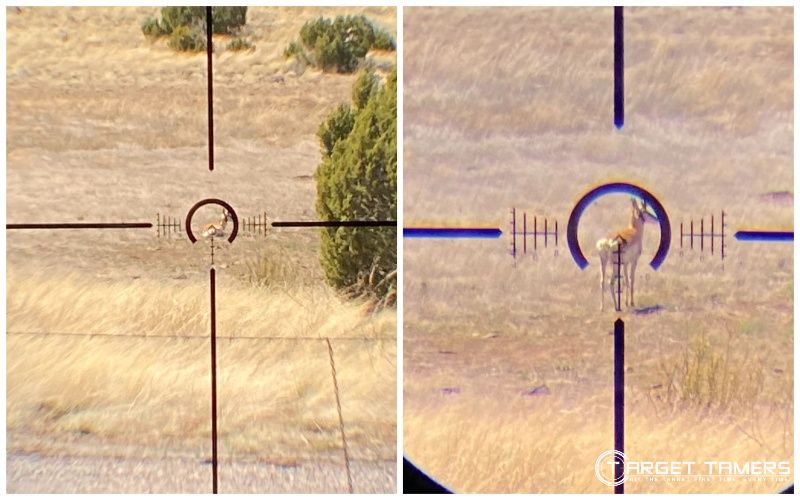
In regard to chromatic aberration, I had to look really hard at max magnification to spot it. Primary Arms states that it has premium grade low-dispersion glass with no specifics about extra-low dispersion elements. However, it certainly performs like an ED scope, so maybe that’s what the “premium” term is alluding to?
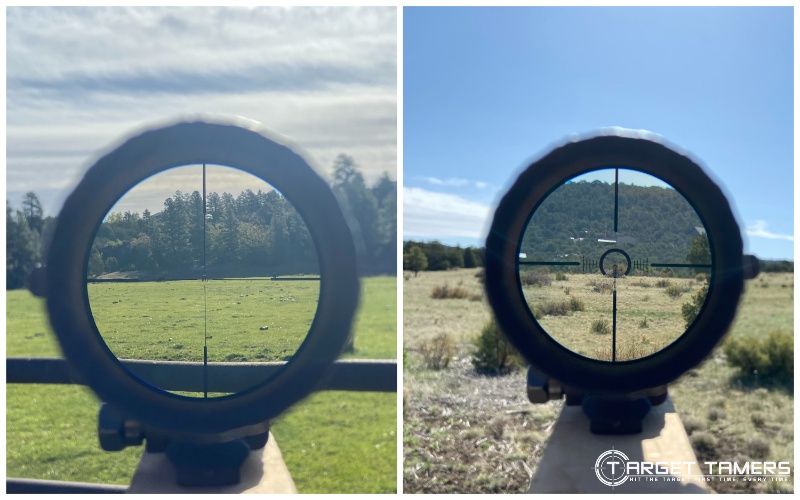
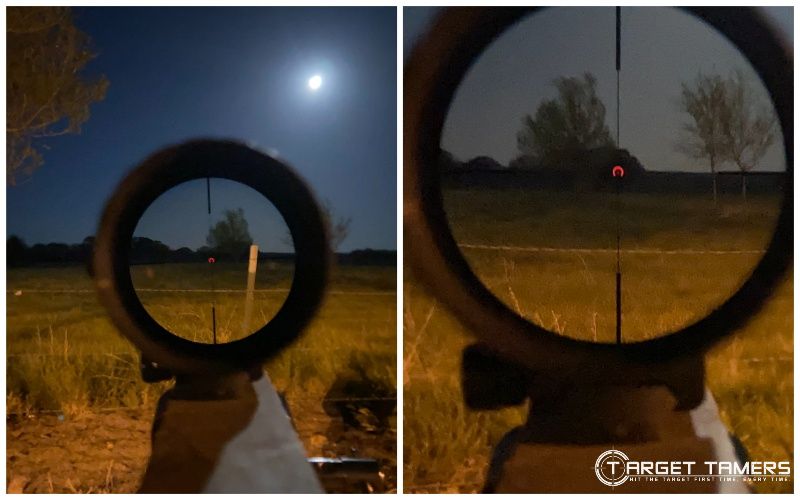
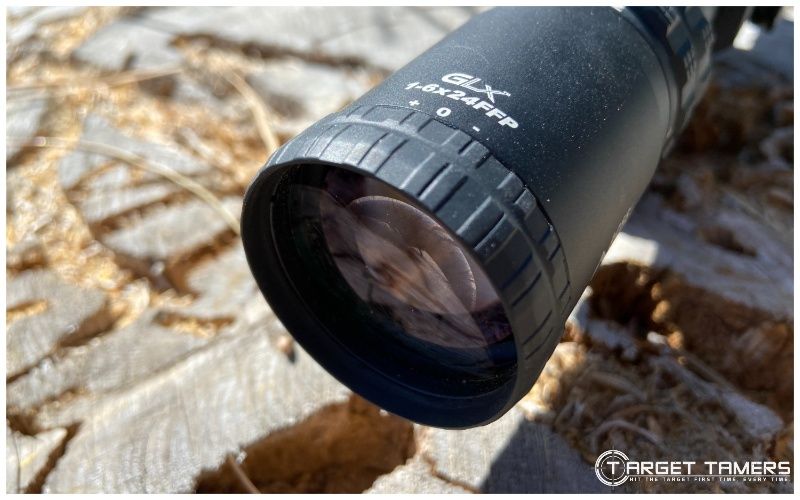
The FMC lenses allow maximum light transmission. As an LPV scope, it wasn’t great after dark. Right as the last bit of the sunset was dying out, I did get in enough light to still identify cattle about 100 yards off, but as night closed in, it lost light quickly.
Long Eye Relief
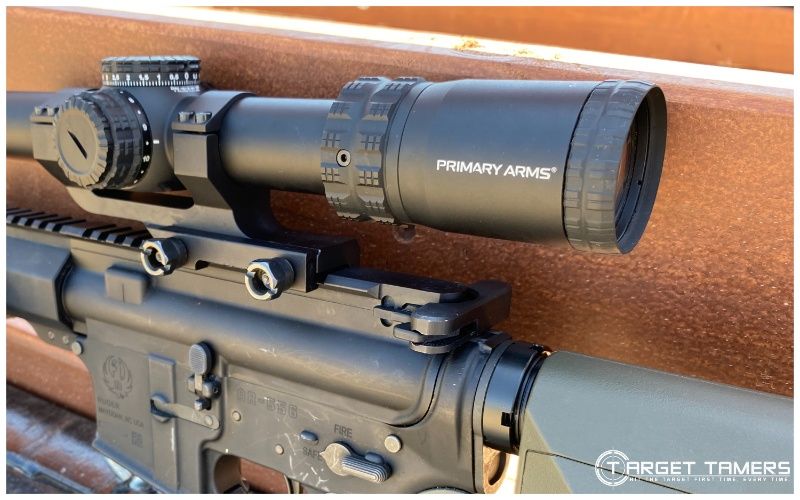
The specs say that the GLx LPV scope has 3.5-3.3” of eye relief. Personally, I found it to be much longer. I crudely measured it several times at 1x and at max 6x, and I measured about 5-4.5” of eye relief if not maybe a half inch more. It’s plenty long enough to get comfortable behind it.
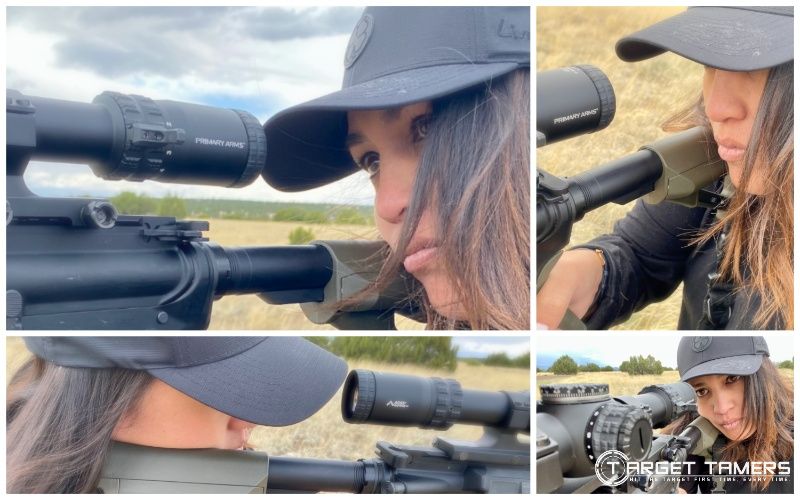
At 1x, it’s very forgiving. The eyebox is large and fast to get inside it. Though some might say it’s finicky to stay inside at 6x, I really didn’t find that to be true. As long as it was rifle mounted, my consistent weld found the full FOV quite naturally and easily, and I credit that to the long eye relief and forgiving eyebox.
Removeable Throw Lever
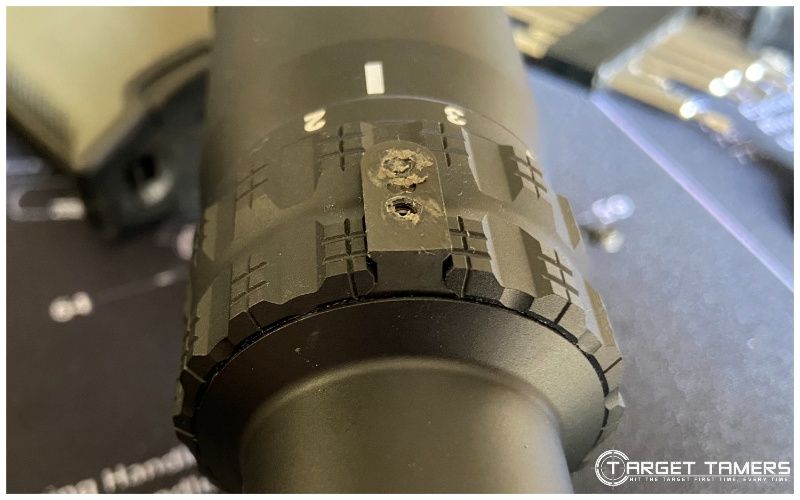
There’s quite a few bells and whistles on the GLx LPV. One of the most obvious features is the throw lever. Most LPVO scopes these days come with one, but what I like is that the fin can be replaced and has a secure dovetail mating mount with 5/64” hex screws.
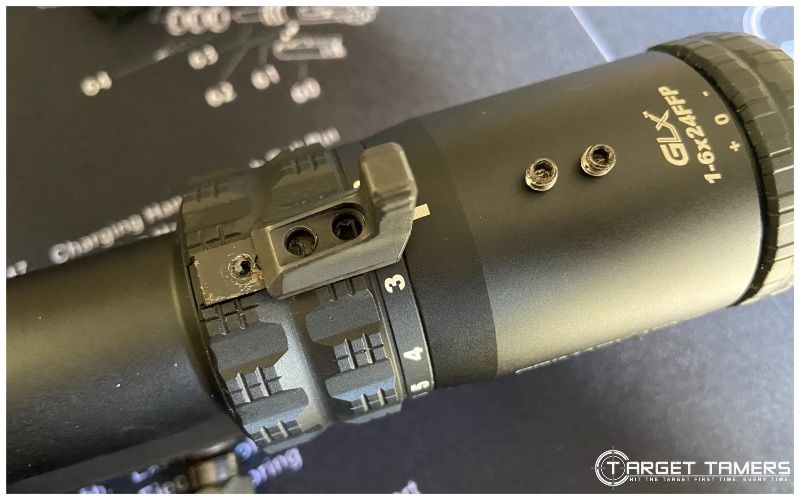
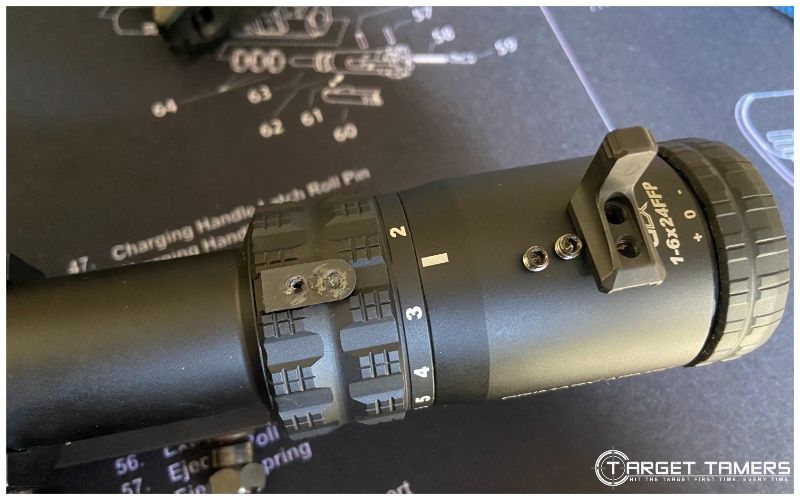
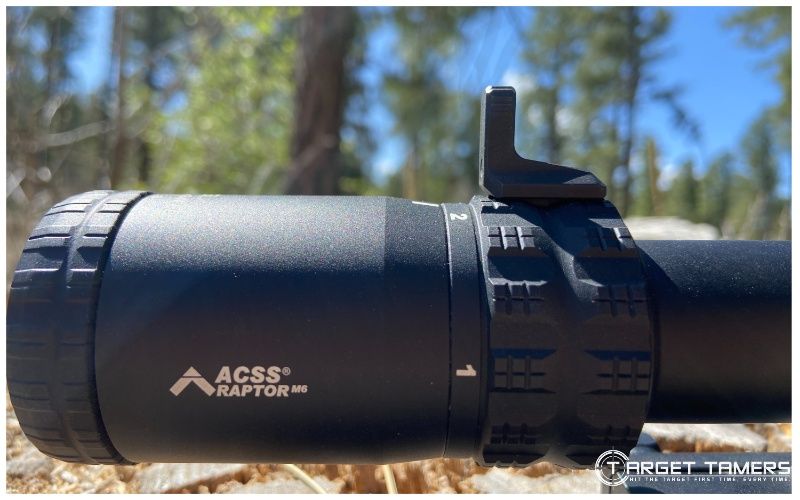
It’s neither a ring-mounted throw lever nor a fixed position one that’s been machined in. Remove the screws and slide out the fin and you can change it for a different size, a different type like the Primary Arm’s flip lever, or simply leave the lever off if you wish.
The tool for it wasn’t included as far as I remember. It’s rugged and sturdy and will hold up to rigorous use. The only thing is that the magnification ring is a little stiff, so it’s not going to unintentionally move. Given the stiffness, I’m probably remarkably slow with it.
Configurable Low-Profile Turrets
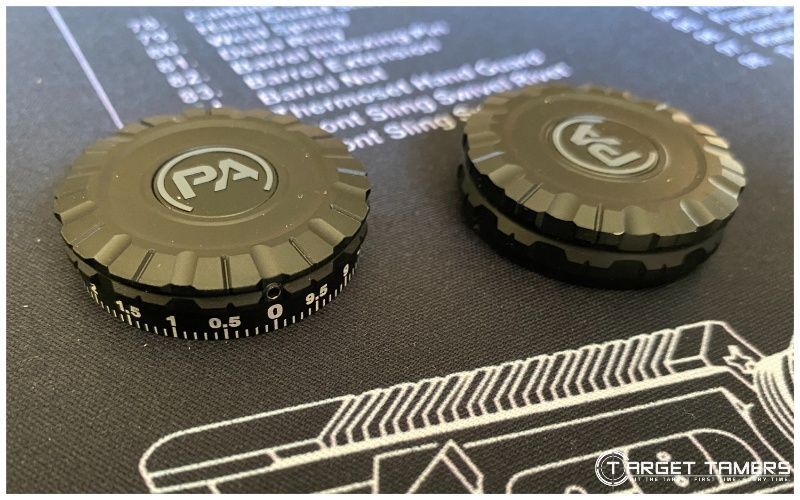
The normal option when choosing a riflescope is to choose one with exposed turrets or capped turrets. It’s uncommon to find a riflescope that offers both options in one package. The Primary Arms GLx LPVO comes with capped turrets and an exposed tactical turret in the box.
What’s the difference? The tactical turret is a self-contained cap complete with 0.1 MIL markings. The knurling is very similar to the unmarked cap and still provides waterproof benefits with its one-piece design that butts up against the O-ring seal at the base. I water-tested the GLx with the tactical turret on, and it was water tight.
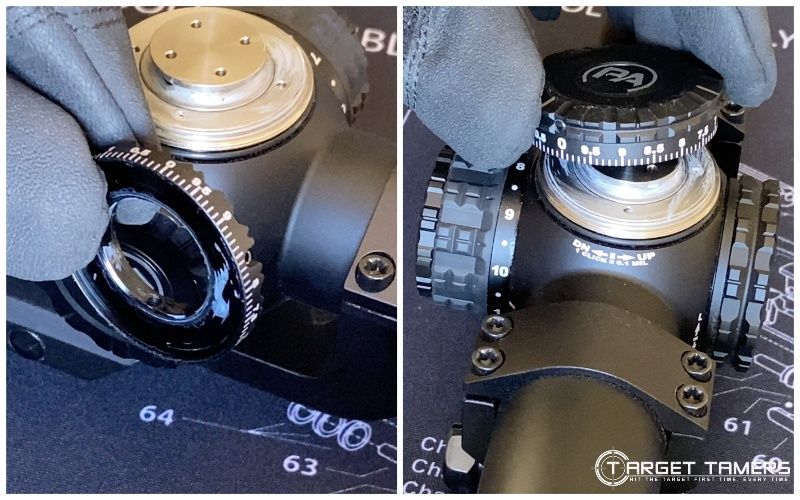
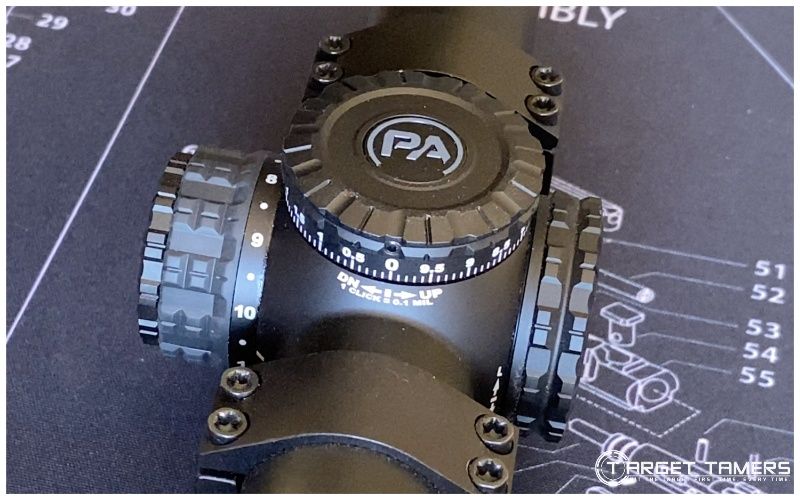
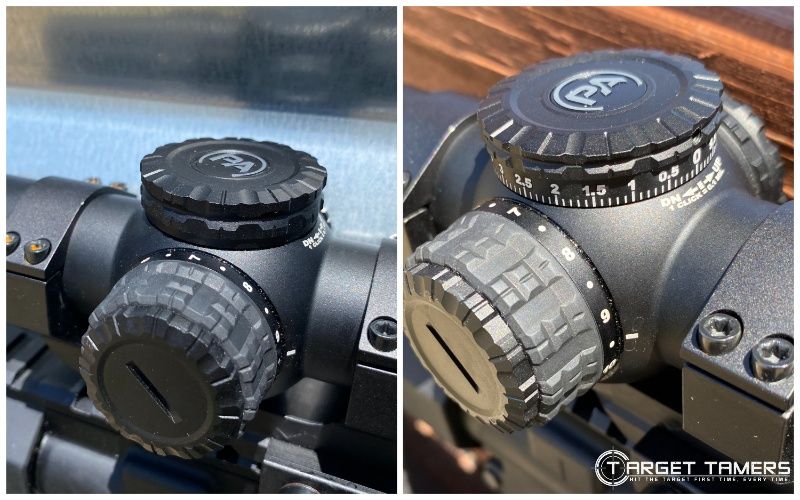
What I did notice with the tactical turret is that the adjustments weren’t as loud or definitive. The feel was acceptable, and I could absolutely count clicks, but it felt dampened.
Since I’d rather hold over using the ACSS reticle than dial in, I prefer to keep the standard capped turrets on. With the standard turret, the clicks are crisp and fantastic. It’s not particularly loud, but it’s somewhat audible and definitely positive in feel.
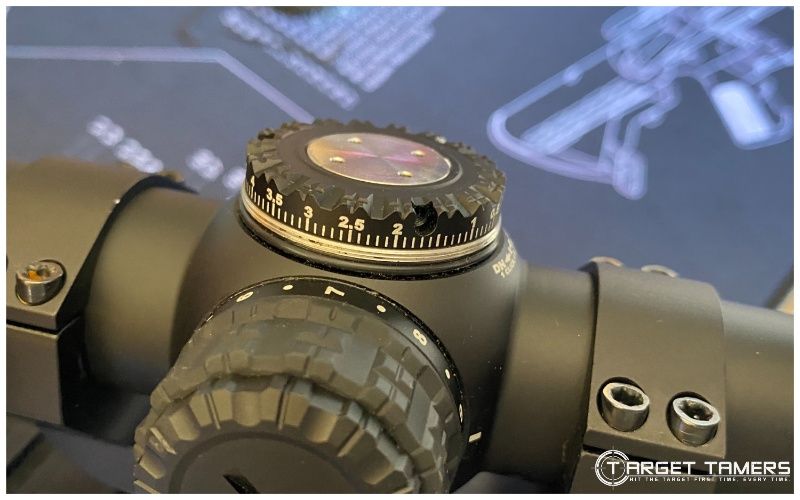
One side note is that I did find the tactical turret nicer on my bare fingers. When making adjustments with the standard turret, the knurling felt sharp. But I use gloves almost all the time, and they were grippy and perfect with them on.
Battery Life
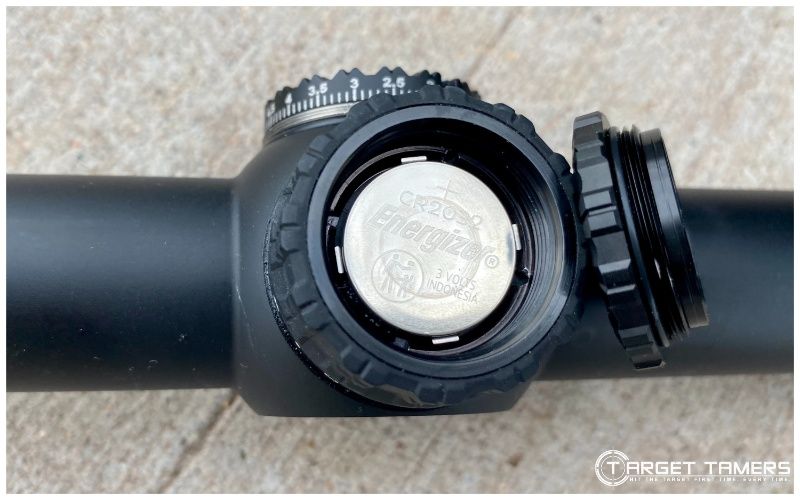
Let’s face it. The battery life in an illuminated riflescope is not nearly as impressive as seen in the best red dot sights. Different beasts though, right? Illuminated scopes with an etched reticle generally provide a battery runtime in the hundreds of hours.
This general rule fits the battery runtime of the PA GLx 1-6x scope. It had been almost two months when I needed to replace the CR2032 battery. I think I was able to stretch it beyond a month because there were periods where I manually turned it off.
Even though it has AutoLive, if you’re not up to replacing batteries once a month, I’d recommend using the illumination manually. The intermittent off positions takes less than a second to use.
Mounting
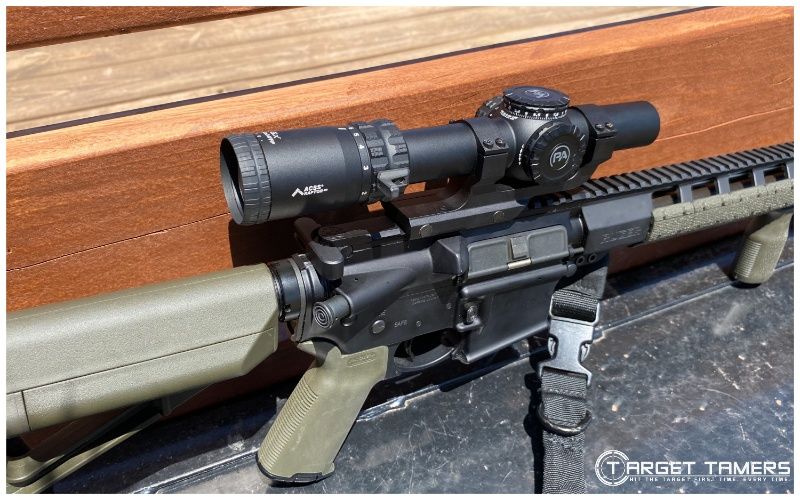
Overall, it’s not standard practice to receive a mount in the box with a riflescope. Most LPVO scopes are mounted with a cantilever mount on an AR-15, M4, and like flat-top rifle systems. The cantilever mount is nearly always a separate purchase.
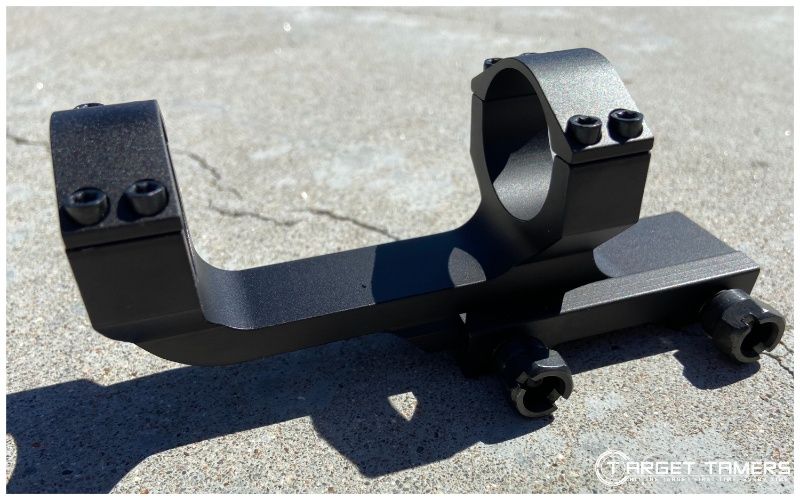
Because the scope was sent to me to field test, Primary Arms included their Deluxe AR-15 scope mount. It’s a cantilever 30mm mount that’s awesome. I like that it’s a quick release mount of sorts with hand-tighten nuts that provide tension to the rail. I don’t have to use a tool when mounting in a jiffy.
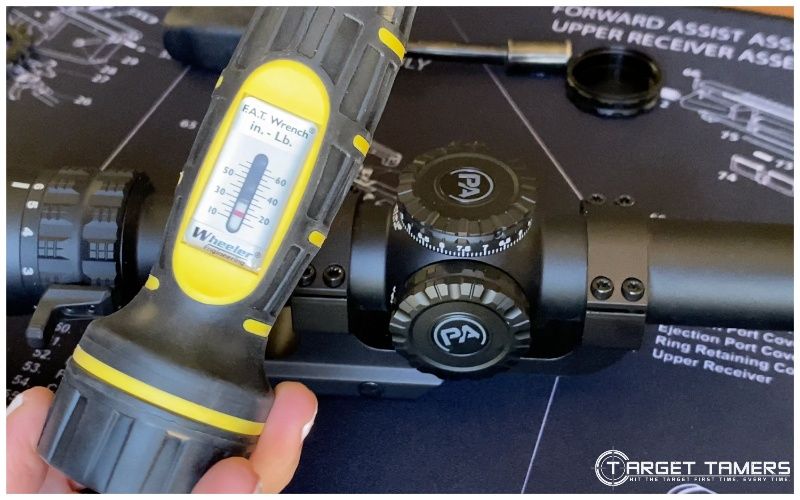
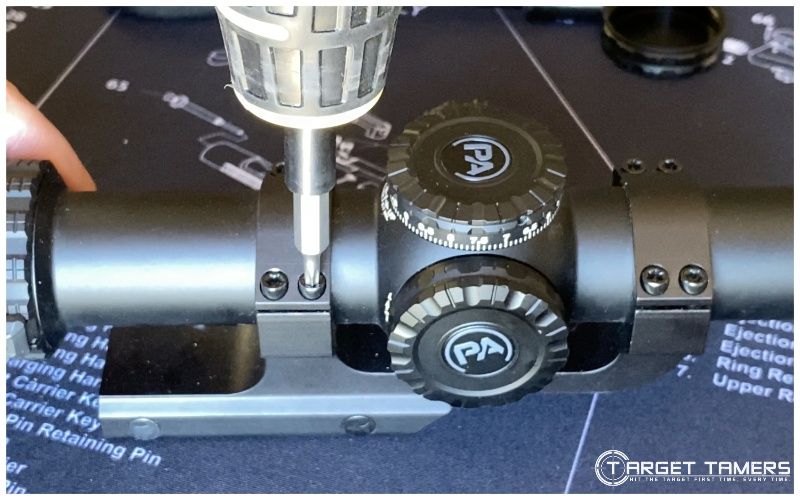
If using a torque wrench and/or mounting to a heavy caliber rifle, it can handle significant torque of up to 35-40 in-lbs. The manual says 40-55 in-lbs, but I don’t think I’d ever need that much. For the ring screws, it’s torqued down to normal specs of 15-20 in-lbs. I'm positive this is what the included thread locker is for.
I honestly have had no movement or wiggle from the mount or the scope even after knocks, drops, and constant mounting and remounting.
Limitations of the PA GLx 1-6x24 FFP
Limited Included Accessories
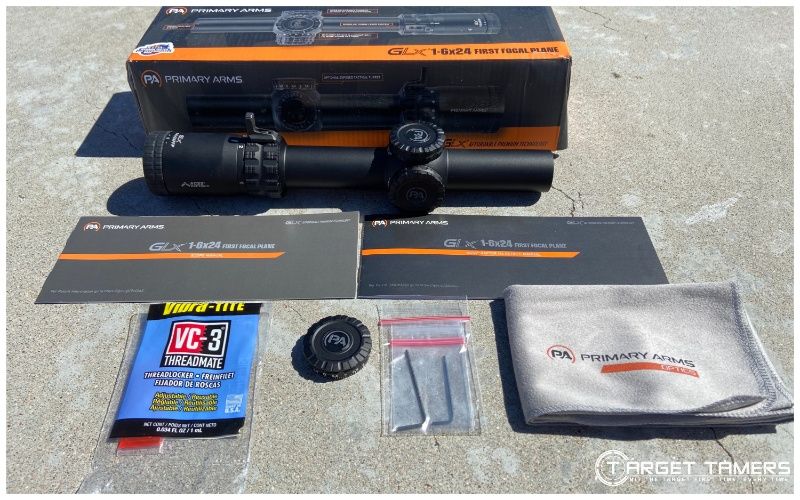
The Primary Arms GLx 1-6x FFP LPVO riflescope comes with limited accessories. However, the accessories that are included are more than a notch above what is usually included as a standard freebie.
Included accessories are the CR2032 battery, tactical exposed turret, tools (wrenches), thread locker, and a very nice, oversized microfiber cloth. Along with the scope manual is a reticle manual.
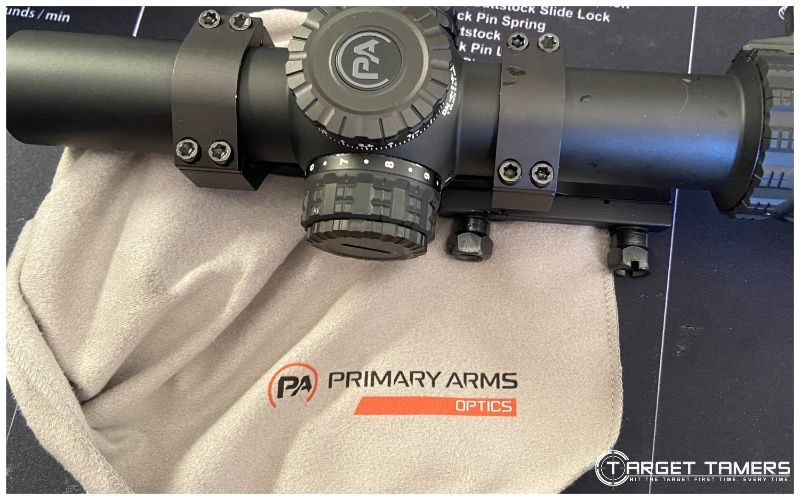
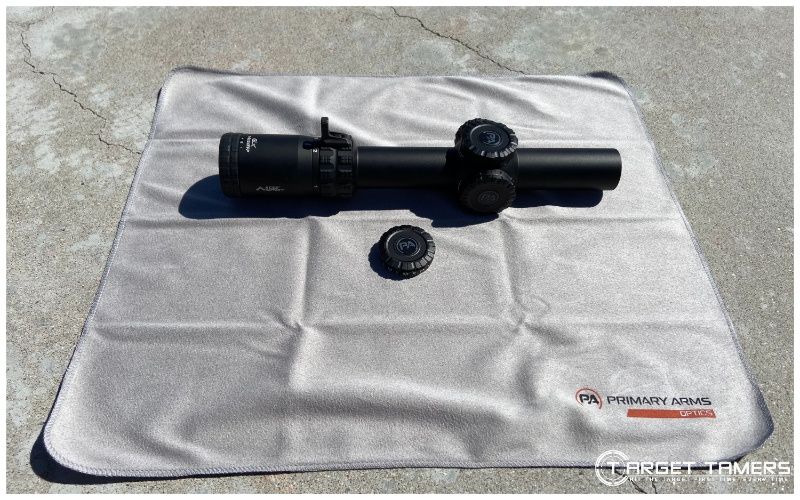
What I wish it also came with is a scope cover or caps and a sunshade. Though not always appreciated by shooters, I like to keep my scopes free of dust and covered, and I’ve always thought a sunshade adds appeal of epic proportion. Of course, there are the benefits of using a sunshade, but I just really like the way they make a scope look.
Popular Questions About the Primary Arms GLx 1-6x24mm FFP
The GLx 1-6x FFP riflescope takes a CR2032 battery, and with the AutoLive motion sensor feature, the battery lasts approximately one month. AutoLive deactivates the illumination after three minutes, but the illumination knob has intermittent off positions.
Image by Tina Fa'apoi (Own Work) for Target Tamers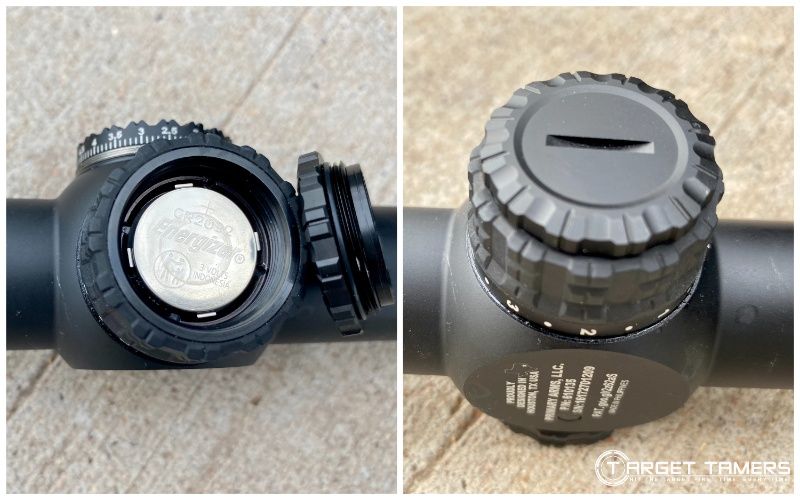
The Primary Arms GLx FFP LPV scope does not have a parallax correction feature in the form of a side focus or an adjustable objective. Parallax is fixed and is likely set for 100 yards.
Overall, though the SLx and entry-level optics are made in China, and the high-end optics, like, the PLx series, are made in Japan. The GLx, as a mid-range series, are made in the Philippines. This is confirmed in white print on the underside of the scope.
Image by Tina Fa'apoi (Own Work) for Target Tamers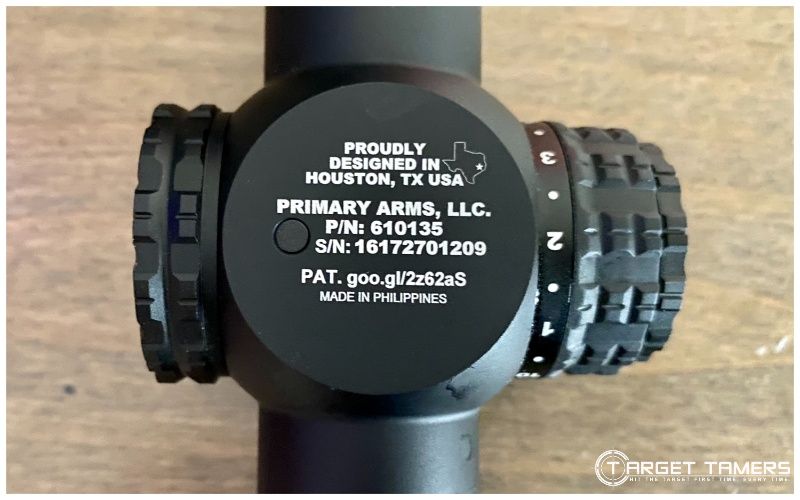
The PA GLx 1-6x24 FFP scope is backed by the Primary Arms Lifetime Warranty. It goes above and beyond than competitive warranties by adding coverage for malfunctions caused by normal wear and tear.
Image by Tina Fa'apoi (Own Work) for Target Tamers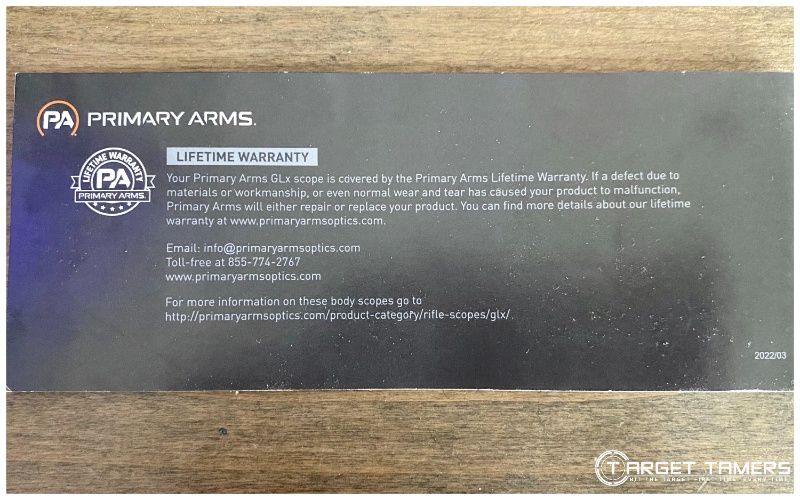
Primary Arms GLx 1-6x FFP: Top-Tier Without the Price Tag
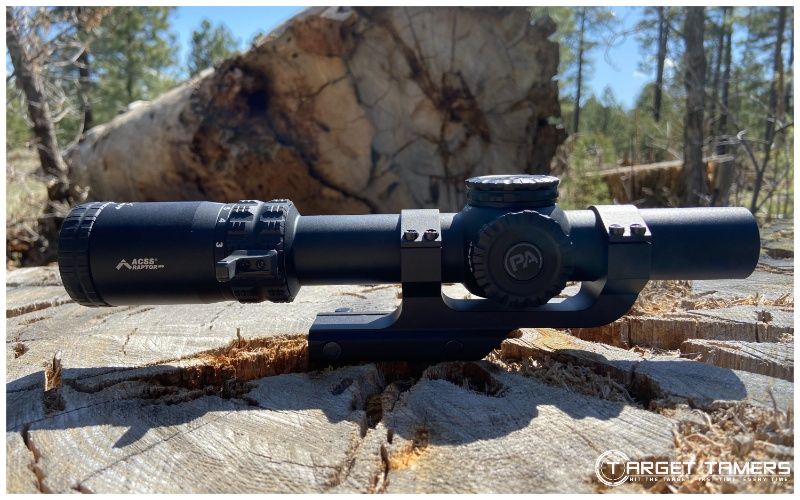
My understanding is that the GLx bridges the gap between the entry-level SLx and the high-end PLx as the mid-tier series of optics.
With that in mind, the Primary Arms GLx 1-6x24mm FFP riflescope comes in under $1000 with maximum versatility given it needs to offer value to be competitive in the LPVO niche. The high-end features are integrated harmoniously and adds to its overall performance and rapid use in the field.
I really like the GLx LPV scope. It’s easy to use, offers a lot of versatility, but it’s also high-grade enough that professionals can use it as a daily beater. And, when I say professionals, I mean law enforcement and the like - it’s NOTA Gold-Medal recommended, remember?
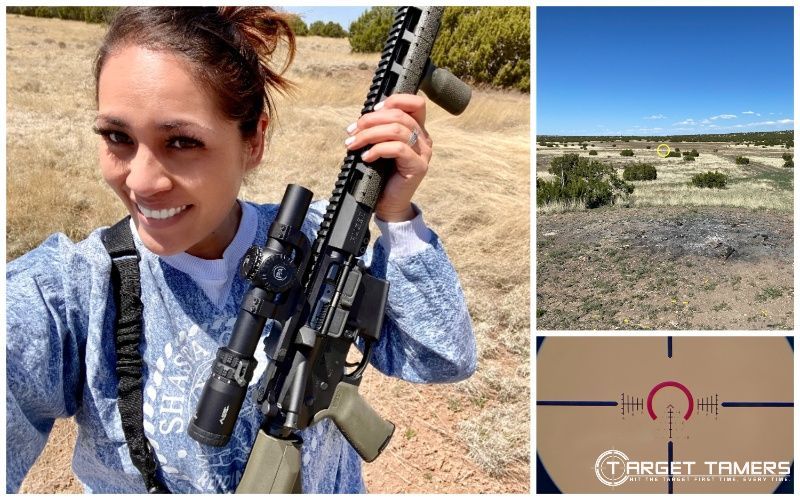
Thanks to Primary Arms for sending me this riflescope to field test. Please note, even though this product was provided by the manufacturer, all opinions expressed are my own and are not in any way influenced by any manufacturers.
Further Reading

